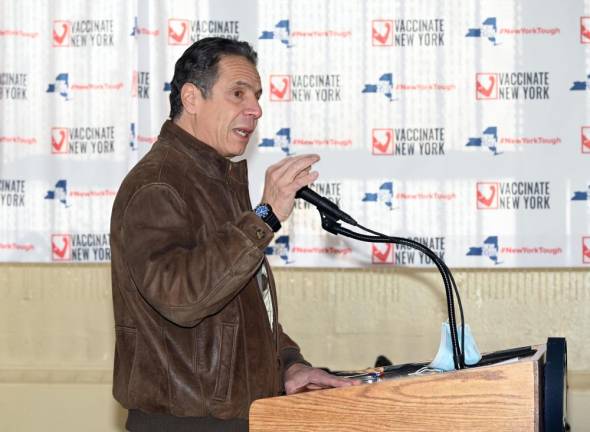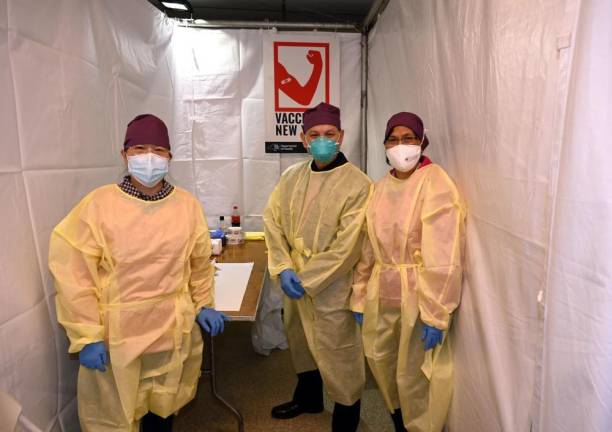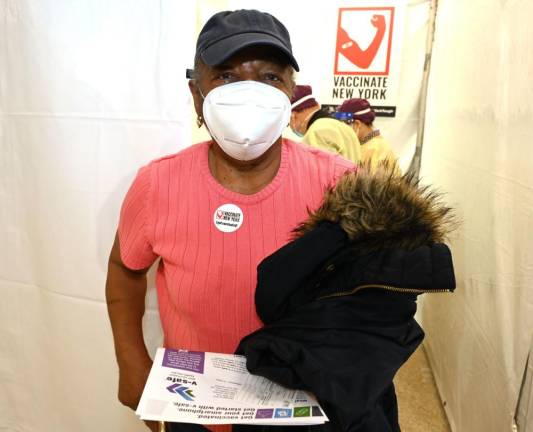NYC’s Vaccine Math
A look at the numbers — and offers to help



The City of New York went into the post-inauguration weekend with 465,000 doses of COVID-19 vaccine on hand. Yet Mayor Bill de Blasio could say, accurately, that the supply was about to run out, leading to canceled appointments for many anxious New Yorkers.
This baffling situation, repeated in many communities, unsettled people as the no longer so novel coronavirus continued to rage through the country and leaders from the novel president down to our familiar governor and mayor struggled to offer clarity while balancing realism and optimism – and of course blaming the just departed administration when possible.
The vaccine rollout is complicated, although whether it is more complicated than the “just-in-time” supply chains that executives before the pandemic bragged about in the Harvard Business Review will have to await, well, a report from the Harvard Business Review.
While this is surely stressful for those eager to receive protection, it isn’t as hard to explain as some officials are making it.
Victoria Merlino at the city’s Department of Health and Mental Hygiene did a good job by just laying out the numbers.
As of Thursday, January 21st, she reported, 1,004,675 doses had been delivered to NYC. Of those, 539,618 have been administered as either first or second doses.
Which left 465,057 doses.
Of that, 119,150 have been set aside for the federal program under which CVS and Walgreens are vaccinating residents and staff at long-term care facilities. Another 25,350 are for NYS-run vaccination sites like the one at the Javits Convention Center.
“That leaves us 320,557,” Merlino continued. “Of those, we are holding 232,485 for second doses. That leaves us 88,072 doses – which includes doses delivered to hospitals, community clinics, pharmacies and urgent cares for eligible patient and staff populations as well as existing reservations at hubs, clinics, pop-ups, mega-sites and elsewhere.”
Merlino said that more than 30,000 doses are now being administered each day in New York City. So 88,000 doses will last less than three days. Hence, all those canceled appointments and expressions of concern from the Mayor and Governor.
“Demand is far outstripping supply and at the pace we’re on, NYC will run out of vaccine,” Merlino said in her one stretch beyond pure data.
Points of View
The situation Merlino laid out by the numbers gets confusing as public officials, much like those blind men describing parts of the elephant, start to talk about this from different points of view.
The largest perspective is, of course, the overall supply of vaccine. The two approved suppliers, Pfizer/BioNTech and Moderna, have each committed to deliver 100 million doses by the end of March. Those 200 million doses would be enough for 100 million people, well under half of the 260 million adults in the United States (there are no approved vaccines for kids yet).
The two companies have committed to deliver a second tranche of 200 million doses by July. So even by summer millions of American adults still won’t have access to the vaccine.
Now, the glass half full folks point out that there are several other vaccines in late stage trials, including a one-shot offering from Johnson & Johnson. Will these new vaccines arrive to ease the shortage? Will your Powerball ticket win?
Vaccines are similar to bed sheets. You can’t just stretch a Queen sized sheet to fit a King bed.
Which is why officials created the rationing system — nursing home residents and staff, health workers, followed by those over (pick one) 65 (Florida followed by New York) or 75 (Connecticut), front line workers, those with health challenges or in vulnerable communities and so on.
The public seemed generally accepting of this, in theory. But like any battle plan the rationing system barely survived first contact with the enemy. At first, New York and many other communities found it impossible to hew to the rationing while also getting all their available vaccine into someone’s arm.
So eligibility was expanded to groups down the list, like healthy 65- year-olds, even as vaccination of other groups, like medical workers, was incomplete.
In other words, officials knowingly increased demand to improve distribution.
“Our Supply is Scarce”
The pace of vaccination leapt dramatically. Indeed, the million doses a day that President Biden set for his first hundred days was reached across the country on several days in the last two weeks. But as the front line moved faster the supply line has had trouble keeping up.
Which is where we were this weekend. “While we have the operational capacity to do more, our supply is scarce, and first dose supply could run out as soon as tomorrow,” Governor Cuomo said Thursday.
The specter of delays has alarmed New York’s business community, which is now counting on the vaccine to bring the NYC economy back to life. A group of business leaders called the governor’s staff Thursday to ask what they might do to help.
Nationally, officials report that Pfizer and Moderna are currently producing 12 to 18 million doses a week between them. So even if half is committed for second doses, there should still be 6 to 9 million first doses a week, which would improve on Biden’s 100 million doses in his first hundred days by making it a million new patients not just doses a day.
But getting those doses where they need to be when they need to be is still a work in progress, officials say. A number of ideas are being discussed for stretching the supply. The vials Pfizer shipped turned out to hold six doses instead of five. Pfizer says it plans to count those surprise doses against its delivery commitment, but presumably that is something Biden could discuss with the company.
Over at Moderna, the CEO has said that for those under 55 half doses would be fully effective.
First and Second Doses
On Friday the Centers for Disease Control loosened two regulations on administering the vaccines to give health officials more flexibility with their available supplies.
The first was to allow delays between the first and second dose of up to six weeks, a measure other countries have already adopted. The vaccines were clinically tested with gaps of three or four weeks. But Anthony Fauci, Biden’s chief medical adviser, said he did not see much immunological distinction between three or four weeks and six.
The other change is to allow the second dose to be a different vaccine from the first. The CDC said it was allowing such shifts for “exceptional circumstances.” But in the worst global pandemic in 100 years, it is not clear what is not an “exceptional circumstance.”
These changes are modest compared to the idea, floated by some experts, to get everyone possible a first dose and then come back later with second doses. While first doses did show considerable effectiveness in the clinical trials, this departure from what was tested was too much for most officials.
“I want to stress one important point,” Cuomo said, “New Yorkers who have already received their first dose do not have to worry that they will not be able to get a second dose — we always ensure there are enough vaccine doses to complete the vaccination for those who got their first dose already.”
“Demand is far outstripping supply and at the pace we’re on, NYC will run out of vaccine.” Victoria Merlino, NYC Department of Health and Mental Hygiene